|
|
 |
| A tandem canopy North American F-100F Super Sabre |
North American F-100F Super Sabre 56-3771, crashed near Superior, Arizona on April 4, 1960.
Summary: A flight of three F-100 aircraft departed Williams AFB for an Air Combat Maneuvers training mission to be flown at 35,000 feet over an area roughly 40 miles east-southeast of the base. During the third engagement, Instructor Pilot, Captain Robert Vickery, and his student, 2nd Lt. Terrel Johnson, spotted the contrails of the two opposing F-100 fighters and increased their airspeed to catch the flight. At 35,000 feet, the student went into a 2 G turn at approximately a 45 degree angle at 275 knots airspeed. The opposing fighters approached the flight from their 5 o'clock position and Captain Vickery told the student to decrease his rate of turn until the lead F-100 came within range. As Captain Vickery was looking aft to observe the approach of the attacking fighters, he noted an increase in the acceleration and felt an onset of the adverse yaw. He immediately turned his attention to the control of the aircraft and neutralized the stick and used the rudder to correct for the left adverse yaw. The aircraft then went into a right wing turn-down, which the instructor thought was the desired recovery, however the aircraft then pitched up to the right and fell into a right flat spin. The instructor attempted a normal spin recovery with full aft stick, full right aileron, and full left rudder, but to no avail so he told the student they would need to abandon the aircraft. The student was having difficulty grasping the seat handles since he was thrown to the upper left of the cockpit due to centrifugal force, and was finally able to push himself back into his seat and grab the handles. The instructor jettisoned the canopy and tried to get the student to eject first since he was unsure whether the student could make it. The student assured him that he would be able to, so the instructor fired his seat at 14,000 feet above terrain and the student followed and fired his seat at 13,000 feet. The aircraft continued a flat spin until it
impacted the ground on a 4,000 foot mountain in very rugged terrain
southeast of Superior, AZ. The pilots landed 3 miles south of the crash
and were recovered by a helicopter within 45 minutes.
|
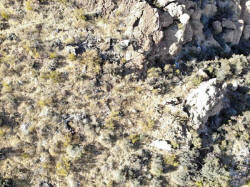 |
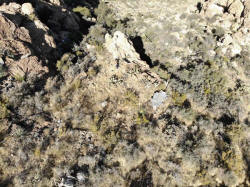 |
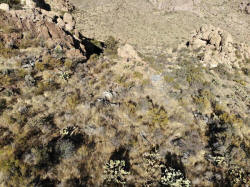 |
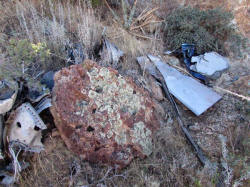 |
| Overhead view of the crash site from a drone. | Drone view. | Drone view. | Wreckage. |
 |
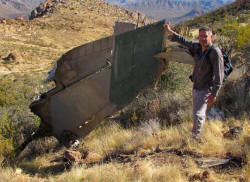 |
 |
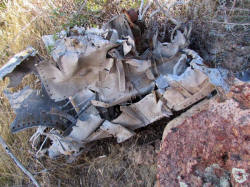 |
| The vertical stabilizer/ tail section. | The bottom side still has paint remnants. | An instrument from the cockpit. | Wreckage. |
 |
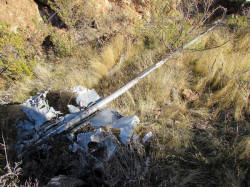 |
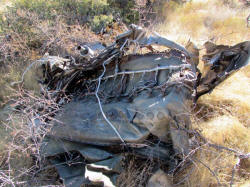 |
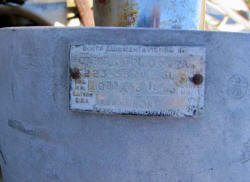 |
| The Sabre's refueling nozzle. | Refueling nozzle. | A smashed component of the engine. | "Actuator- Hydraulic Servo" |
 |
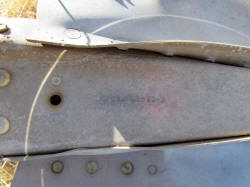 |
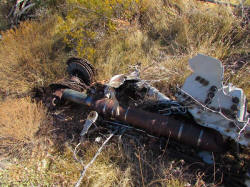 |
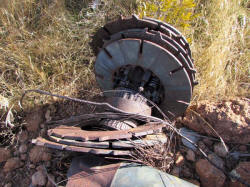 |
| Another section of the smashed engine. | The "192" part number prefix confirms this was an F-100F. | Oneof the main landing gears. | A close-up photo of the wheel assembly and brake pads. |
 |
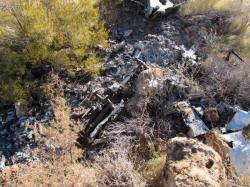 |
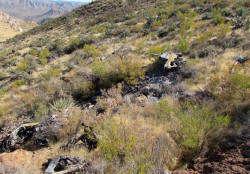 |
 |
| Main debris and burn area. | Burn area. | More debris scattered on the hillside. | Nose landing gear. |
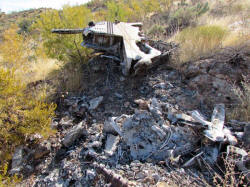 |
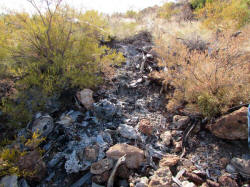 |
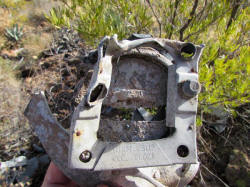 |
 |
| Main burn area. | Aluminum ingots. | Turn & Slip indicator. |
Fuel gauge indicator. |
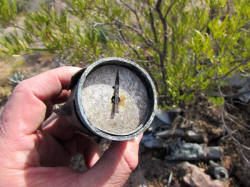 |
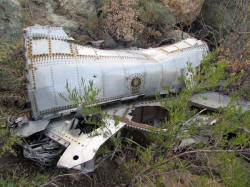 |
 |
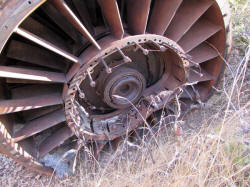 |
| A cockpit instrument. | A section of fuselage behind the cockpit. | Engine compressor. | Close-up. |